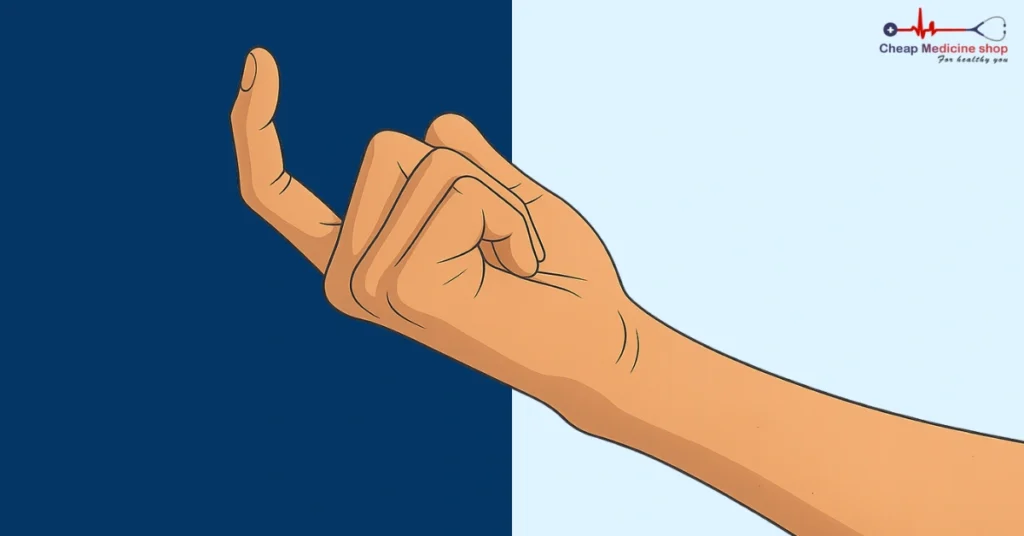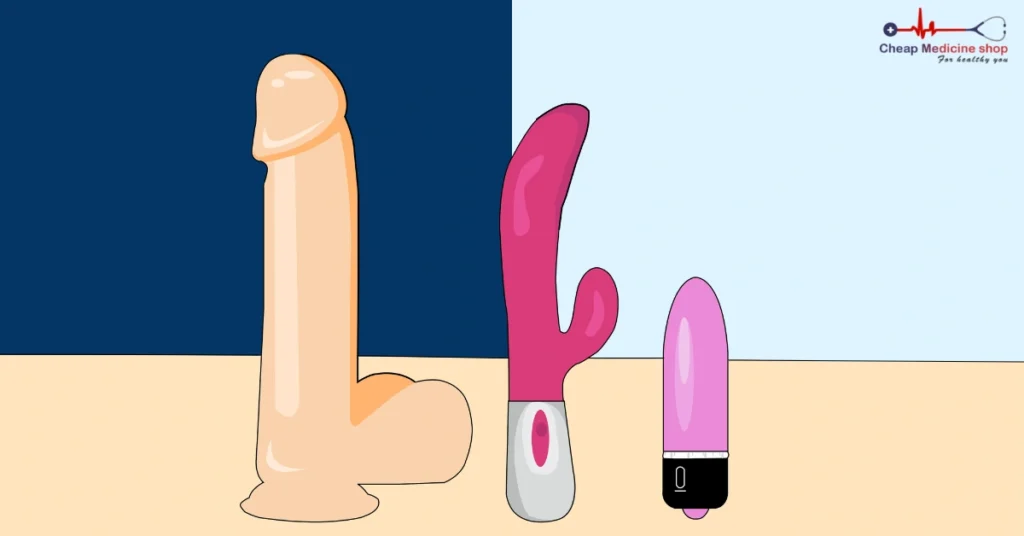Many men feel uncertain about helping their partner reach orgasm, and that’s completely natural. The reality is that female orgasm requires understanding, patience, and communication more than any specific technique.
Research shows that only about 65% of women regularly orgasm during partnered sex, while 95% can orgasm through masturbation. This gap exists largely because many partners don’t understand how female arousal works or which techniques are most effective. The clitoris, for example, has over 8,000 nerve endings, more than any other human body part, yet it’s often overlooked during intimacy.
Understanding how to make a female orgasm involves learning about her anatomy, building arousal gradually, and staying responsive to her feedback. Whether you’re exploring clitoral stimulation, internal G-spot pleasure, or both, the key is creating an experience where she feels relaxed, connected, and fully aroused.
This pleasure guide will walk you through practical, expert-backed methods to help her reach climax while building deeper intimacy between you two. You’ll learn what really works and how to create the conditions for her best orgasmic experiences.
Step 1: Understand her anatomy and pleasure zones

Female anatomy has specific areas that respond to stimulation differently. Knowing where to focus and how each zone works makes orgasm far more achievable.
1. Learn the key pleasure zones
The female body has several areas that contribute to orgasm:
- Clitoris: It is the most reliable source of orgasm for most women. The visible part (glans) is just the tip. The full clitoral structure extends internally along both sides of the vaginal opening.
- G-spot: It is located 2-3 inches deep in the vagina on the front wall (near the belly button). It feels slightly rougher or ridged compared to the surrounding tissue.
- Labia: These are the inner and outer lips surrounding the vaginal opening. They are highly sensitive to gentle touch and pressure.
- Cervix: It is a muscular, tunnel-like organ that connects the uterus to the vagina. Some women experience deep pleasure from cervical stimulation, though others find it uncomfortable.
- Anus: The anal area contains many nerve endings, making it sensitive to stimulation. It should only be explored with care, cleanliness, and mutual consent, using adequate lubrication to ensure comfort and safety.
2. Ask what works for her body
Every woman’s sensitivity and preferences are different. What works for others may not work for her.
- Ask directly about the pressure to apply, pace, and areas where she feels comfortable.
- Watch her body language, including breathing patterns, muscle tension, and sound, as they indicate what’s working.
- Encourage her to guide your hand or show you what she likes.
Step 2: Build arousal through ambiance and foreplay

Women typically need 20-40 minutes of arousal before orgasm becomes possible. Rushing to genital stimulation before her body is ready makes climax nearly impossible. Foreplay can build intimacy over time to give a more fulfilling experience.
1. Create a relaxed, intimate atmosphere
The environment directly affects her ability to relax and become aroused.
- Dim the room lights or use candles to create a warm, intimate glow.
- Play soft music that you both enjoy to set a relaxed mood.
- Remove all distractions, put phones on silent and close the door.
- Ensure the room is comfortably warm so she doesn’t feel self-conscious.
2. Start with kissing and full-body touch
Begin with non-genital touch to activate arousal throughout her entire body.
- Kiss her slowly and deeply without immediately moving to sexual areas.
- Run your hands along her back, sides, neck, and thighs.
- Touch her erogenous zones like her neck, ears, and inner wrists.
- Take at least 10-15 minutes on full-body exploration before genital touch.
Step 3: Master clitoral stimulation techniques

Multiple studies suggest 70-80% of women achieve orgasm with direct clitoral stimulation. Mastering the right touch, rhythm, and pressure is the most reliable path to her climax.
1. Start gently with circular motions
The clitoris is extremely sensitive, especially early in arousal. To make her orgasm, you should:
- Use your fingers in gentle circular motions around the clitoral hood.
- Apply light to moderate pressure. Never start with aggressive rubbing.
- Keep movements slow and consistent initially.
- Use plenty of lubrication (natural or water-based) to prevent friction.
2. Maintain a consistent rhythm as she gets close
The biggest mistake is changing technique right when it’s working. Instead of constantly switching, try to observe what’s working and stick to it.
- When she starts breathing heavier or moaning, keep doing exactly what you’re doing.
- Don’t speed up, slow down, or switch motions as she approaches orgasm.
- Maintain the same pressure and rhythm through her climax.
- Resist the urge to try something new once you’ve found what works.
Step 4: Move gradually to advanced stimulation

Once she’s aroused, you can heighten her pleasure by introducing more intimate, layered sensations. Oral stimulation and dual touch create a fuller, body-wide experience that can lead to deeper, more satisfying climaxes.
1. Try oral stimulation for added sensation
Oral sex provides warm, wet stimulation that many women find highly effective.
- Use your tongue in circular or side-to-side motions around the clitoris.
- Alternate between gentle licking and light sucking.
- Keep a steady rhythm rather than constantly changing patterns.
- Use your fingers for internal stimulation simultaneously.
- Move towards anal stimulation similarly, if she consents.
2. Combine internal and external touch
Many women respond best to simultaneous internal and external stimulation. Here’s how to do it:
- Insert one or two fingers while stimulating her clitoris with your thumb or other hand.
- Curl your inserted fingers upward to stroke the G-spot with a “come hither” motion (a gesture of asking someone to come closer with your finger).
- Maintain steady clitoral stimulation while applying internal pressure.
- Keep both motions consistent and rhythmic.
Step 5: Use positions and penetration strategically

While most women need clitoral stimulation to orgasm, certain positions maximize pleasure and make climax more accessible during penetrative sex.
1. Choose positions that allow clitoral access
Positions where she or you can stimulate her clitoris during penetration work best. Some of them include:
- Woman on top: Gives her control over angle, depth, and allows her to grind against you for clitoral contact.
- Spooning: Allows easy clitoral access with your hand while penetrating from behind.
- Sitting position: Straddling her on your thighs allows more clitoral contact, different angles, and grinding. You can also use your hands occasionally for stimulation.
2. Try positions that target the G-spot
Certain angles provide better internal stimulation of the G-spot. If you both are comfortable and ready to try new things, you can consider:
- Rear entry: It creates an upward angle that hits the front vaginal wall precisely.
- Legs over shoulders: It allows deeper penetration with G-spot contact.
- Woman on top leaning back: This positions help apply more direct pressure to the G-spot.
- Modified missionary with pillow under her hips: It changes the angle to hit the G-spot easily while also allowing clitoral access.
Step 6: Incorporate sex toys for reliable stimulation

Sex toys provide consistent, powerful stimulation that hands and mouth cannot match. Approximately 37% of women need or greatly benefit from vibrator use during partnered sex.
1. Choose the toy that works for her
Enhance pleasure by adding a vibrator during sex to stimulate the clitoris and G-spot simultaneously. Let her control the intensity and pace while you focus on staying in sync. Start with gentle pressure and build together as the sensations grow.
Try any of these options based on what feels natural and comfortable for her:
- A small bullet or mini wand vibrator for direct clitoral stimulation during penetration.
- A curved G-spot vibrator or dildo with an upward tip that applies steady internal pressure.
- A suction-style clitoral toy that delivers pulsing air sensations similar to oral pleasure.
2. Frame toys as enhancements, not replacements
Toys should enhance your intimacy, not replace connection or make you feel less significant. Make it your ally, not your enemy.
- Tell her you want to use toys to give her more pleasure.
- Ask her to show you how she uses them when masturbating alone.
- Learn what speeds, pressures, and positions work best for her with toys.
- Use her responses with toys as guides for your manual techniques.
Frequently Asked Questions
How long does a female orgasm last?
A typical female orgasm lasts 13-51 seconds, averaging about 20 seconds. The pelvic floor muscles contract rhythmically every 0.8 seconds during climax, though the overall pleasurable sensation may persist longer.
How does a female orgasm feel?
Women describe it as intense waves of pleasure radiating from the genitals throughout the body, rhythmic pulsing sensations, and temporary loss of awareness. Clitoral orgasms feel more intense and localized, while G-spot orgasms feel deeper and fuller.
How does a female orgasm work physiologically?
During sexual arousal, blood flow increases to the genitals, causing lubrication. With continued stimulation, muscle tension builds until climax triggers 3-15 rhythmic pelvic floor contractions while the brain releases dopamine, oxytocin, and endorphins.
How many calories does a female orgasm burn?
A female orgasm burns approximately 3-5 calories. The entire sexual encounter burns 60-100 calories over 15-30 minutes, but orgasm itself is too brief to burn significant calories despite the intense muscle contractions.
How many times can a female orgasm in one session?
Women may experience multiple orgasms without a refractory period. Some achieve 2-5 per session, while others may have 10 or more with sustained stimulation. However, many are satisfied with one and find continued stimulation uncomfortable afterward.
What are the health benefits of female orgasm?
Orgasm offers improved sleep, pain relief through endorphin release, stronger pelvic floor muscles, stress reduction, mood enhancement via dopamine and serotonin, increased bonding through oxytocin, and potential immune system support. It also improves body confidence and emotional well-being.
Cheap Medicine Shop only refers to credible, authoritative sources for our content. If you’re curious about how we ensure the integrity of our content, we encourage you to read our Content Information Policy.














